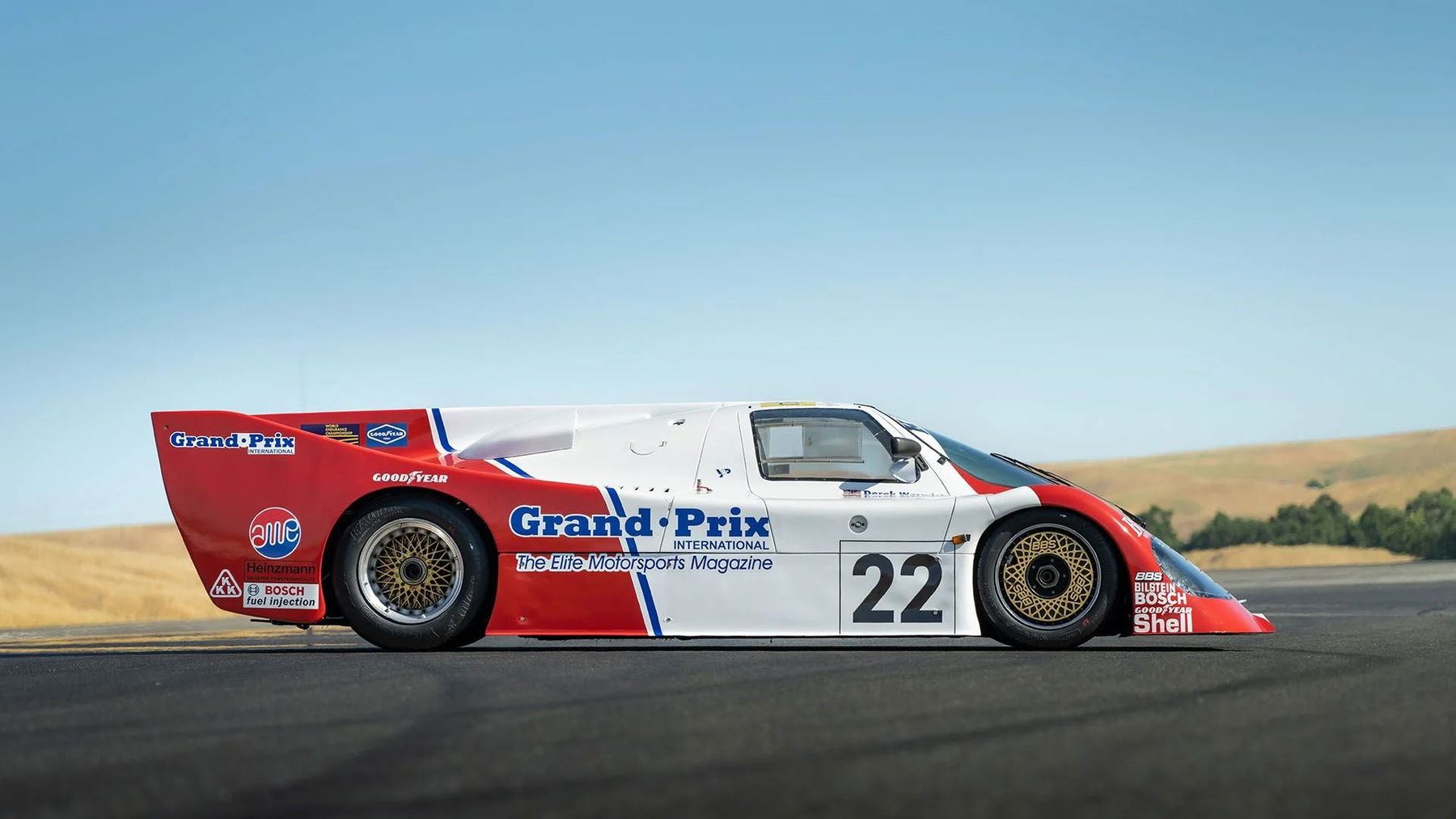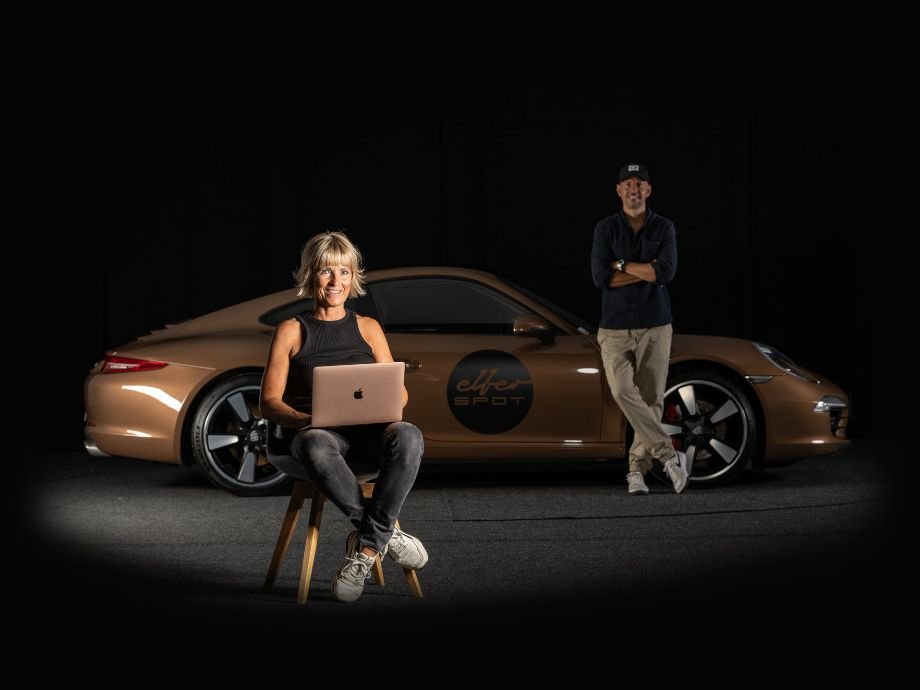Chassis No. CK5-02
Engine No. 6980077/1
Transmission No. 917 093
Throughout the 1970s, 1980s, and 1990s Kremer and Porsche were about as inseparable as a privateer race team and manufacturer can be without being absorbed as an official works entry. Founded by the brothers Kremer (Manfred and Erwin) in 1962, the Auto Kremer restoration shop in Cologne, Germany, quickly became a racing hub of supreme significance. Toward the end of that decade the Kremer race team hit their stride with class wins at the Spa 24 Hours and Le Mans 24 Hours—always in GT-class Porsche 911s. As Porsche advanced throughout the ’70s so too did Kremer. The Kremer brothers fielded Porsches in both Group 4 (934) and Group 5 (935) before striking it out on their own with their own 935-based Kremer K2s. As the Porsche factory began to move away from GT sports car racing, placing a greater importance on the Group 6 936, Kremer rolled all of their engineering knowledge into their own 935 K3. The K3 became a juggernaut catapulting the team to an overall victory at the 1979 24 Hours of Le Mans at the hands of Klaus Ludwig and the Whittington brothers, simultaneously entrenching them as bona fide race car manufacturers at the highest level.
As the FIA announced new endurance racing rules for 1982 replacing the numeric nomenclature, Kremer had a decision to make: purchase Porsche’s cutting-edge design when it became available and race as a privateer against the factory or continue to build and modify their own cars as a constructor as they had since the late 1970s. It turns out Porsche made the decision for them with those in Zuffenhausen and Weissach restricting the use of the new 956 for the factory team for 1982. Spurred onward, Kremer’s technical team began construction of their new Group C class sportscar racing prototype dubbed the CK5 in reference to the series of “K” creations that began in 1976.
Just as with the 935 K3, the CK5 was heavily Porsche influenced. The Group C sportscar racing prototype featured a closed cockpit and gullwing bodywork by Ekkehard Zimmermann of the famous Design Plastik firm with 936-style aluminum spaceframe construction and a chassis that combined elements of 908/3 and 936, with a roof added. Powering the new CK5 was the venerable twin-turbocharged flat-six in 2.8-liter form. Upon debut at Le Mans, against the mighty armada of three new factory 956s, Lancias, Ford C100s, and Sauber Fords, the CK5 qualified an impressive 8th in a solid field of 56. Clocked at 207 mph on the Mulsanne Straight, it was undeniably quick running as high as 3rd overall. At the end of the season Kremer’s CK5-01 was sold to Richard Cleare Racing in the U.K.
In preparation for the 1983 Group C season, Kremer built a second CK5-02—the very same that Broad Arrow Auctions is proud to offer here. The engine gained 200-cc and according to Jürgen Barth was now similar to that used in the 935 K3. The four-valve race-spec engine featured flat-fan cooling, Bosch mechanical fuel-injection, twin-spark ignition, adjustable boost control, and a massive intercooler set on top. Numerous parts were borrowed from the all-conquering 917. In fact, Barth states that the car “owed more to the 917 than the 936.” Most notably the four-speed gearbox is a Type 920 unit from a 917/10, while 917 brake calipers and rotors were used in addition to 917 wishbones, suspension uprights, hubs, and steering rack. Given Kremer’s experience with the 936, which used a number of 917 parts, and their own 917/81 built for Le Mans in 1981, it makes sense that these tested lightweight components would find their way on the new car no matter how valuable they were quickly becoming.
Kremer chassis CK5-02 made its race debut at the 24 Hours of Le Mans as start number 22 dressed in the colors of Grand Prix International magazine. With the trio of Formula One star Derek Warwick, German sports car ace Frank Jelinski, and Frenchman Patrick Gaillard behind the wheel, CK5-02 qualified 14th as the highest placed non-Porsche 956 or Lancia LC2. Warwick held his position on the opening laps and while battling the world’s best sports car teams and drivers, a head gasket failure put the team out after 76 laps and approximately five hours of hard racing. After Le Mans, chassis 02 stayed with the Kremer team piloted by Frank Jelinski at both the Trophäe and DRM Norisring races that July. By September the car was being run by Dutchman Kees Kroesemeijer who had previously raced a Porsche-powered URD prototype. The car was raced by Kroesemeijer, ex-F1 pilot Huub Rothengatter, and Austrian Franz Konrad at the Spa, Brands Hatch, and Kyalami 1000 Kms in Pametex Recycling livery to close out the 1983 season. For 1984, Kroesemeijer raced the car solo in German Interserie and DRM races and for longer events like the Nürburgring 1000 Kms he paired with South African George Fouché. 1985 held additional Interserie races for Kroesemeijer at the Nürburgring, AVUS, and Hockenheim among others.
It is understood that after the 1985 race season, the Kremer team did few if any other racing events and would be retained within Kremer’s workshops into the late 1980s, eventually being painted dark blue and appearing in a period magazine advertisement for “Super Tronic”, a fuel injection additive. The dark blue prototype would then catch the eye of Walter Wolf, whose Wolf Racing F1 team already campaigned cars in this color. Entering the Wolf Racing stable, Walter would adorn the CK5 with his signature livery and it would feature in advertisements for Walter Wolf products. Eventually the CK5 would become part of the collection of Freisinger Motorsport, where it would remain for a number of years.
When acquired by the present owner in 2018 from Freisinger Motorsport, the CK5, remaining in its period Walter Wolf livery, was brought to the U.S. Since that time this Porsche-Kremer prototype has been preserved in mostly undisturbed form as a testament to the early glory days of Group C international endurance racing. The decision was made to return the car to its 1983 Le Mans appearance, with this historic livery being applied in 2022.
Inspection today reveals a high degree of originality, leading to a strong belief that the CK5 was stored and displayed for the majority of its life following its disposition by Kremer. It has not been used in historic competitions and has been kept mostly out of the spotlight for many years, save for a rare appearance in the paddock at Rennsport Reunion 7. The CK5 was last run at Thunderhill Raceway in a low-speed track test to verify its operational nature in July 2023. It should be noted, however, that given the age of its components, and the fact that it simply has not been used in many years, it would be necessary to conduct a full recommissioning and requisite safety checks prior to any further seat time.
The Porsche-Kremer CK5 is a unique Group C machine blending the very best in Porsche prototype componentry with the ingenuity of the Kremer brothers, and represents a significant turning point in international long-distance endurance racing brought upon by the introduction of Porsche’s 956. This remarkably well-preserved example, in its unique and instantly identifiable period livery harkening to its 1983 Le Mans 24 Hours appearance, is a fascinating artifact from the Group C era. Whether destined for further preservation or perhaps a return to historic motor races such as Le Mans Classic, this Porsche-Kremer CK5 is sure to attract interested onlookers and die-hard Porsche fans wherever it goes.
































































































